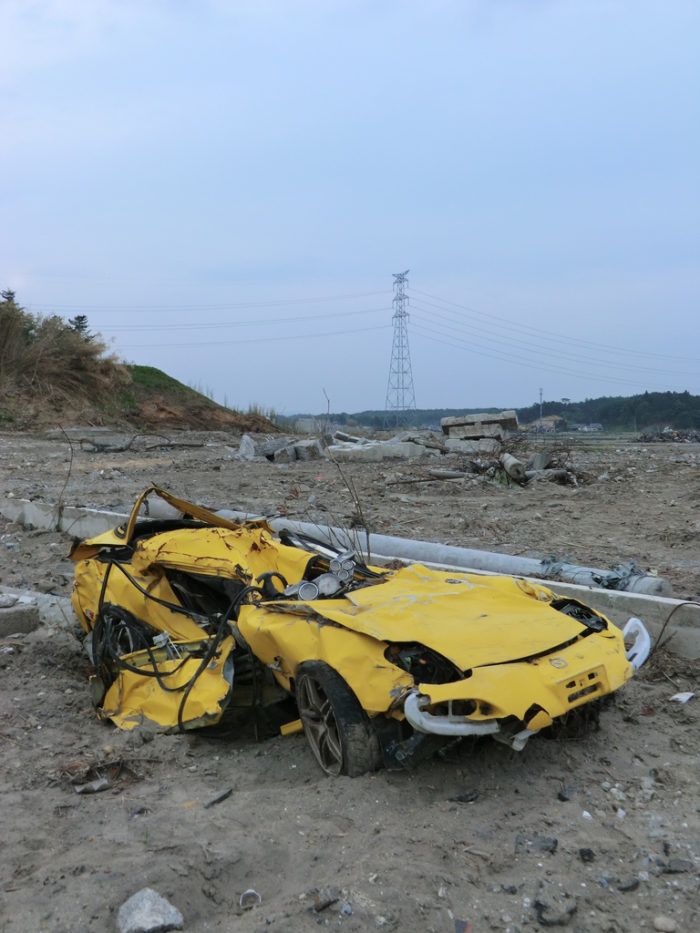Living on a Trickle of Electricity
In the wake of the 2011 earthquake in Japan, a textile artist installs a tiny solar array and goes off-grid

The crippling earthquake that struck Japan in March 2011 was still causing problems for customers of the Tokyo Electric Power Co. more than a year later, and the rolling blackouts were enough to convince a textile artist named Chikako Fujii her life would be better off without a connection to the grid.
So Fujii terminated her contract for electricity, bought a solar panel or two and began learning how to live with a lot less power than she’d gotten used to.
As detailed in an article published in The Asahi Shimbun, Fujii uses less than a kwh of electricity per day. Power comes from a tiny photovoltaic (PV) array on the veranda of her western Tokyo home capable of producing 1kwh of electricity on a sunny day.
That’s just enough to run a washing machine, used to dye fabric, for three hours. When cloudy weather drains the system’s battery, Fujii can hop on a dynamo made from a repurposed exercise bike and pedal for a while to replenish it. She uses a foot-powered sewing machine, and an iron powered by charcoal rather than electricity.
She’s given up entirely on having a refrigerator, a television and an air conditioner.
“I enjoy working out how to lead a life without using electricity,” she told the newspaper.
Working up to the off-grid life in stages
Fujii has taken her conversion one step at a time. Before the earthquake, no doubt like many others, Fujii took electricity for granted. She paid about 4000 yen ($36) a month for electricity and thought nothing of leaving the television on just so she could check the time when she wanted.
But she began dialing back by turning off her home appliances one by one, reducing her bill to about 2000 yen a month and finally, after unplugging the refrigerator, to about 800 yen a month—the equivalent of about $7.
Even that wasn’t enough. “I thought I might be able to live without relying on the power company,” she said, “and decided to start an off-grid life for the fun of it.”
She’s had to be inventive, not only in how she uses the meager amount of electricity she consumes but how to find substitutes for the appliances she once plugged in. For example, she made a heater from an old oil lamp and a flower pot. With the pot turned upside down over the oil lamps, just 20 milliliters of oil (about six tenths of an ounce) keeps the pot warm for up to four hours.
To take the place of an electric tea kettle, Fujii made her own solar water heater by painting glass tubes black and filling them with water.
A business partner’s request to send a document by email on short notice sent Fukii to her exercise bike dynamo to crank out enough electricity to power her computer.
These and other measures have reduced her consumption of electricity to between 500wh and 800wh per day, what the newspaper said it about 92% less than the average household there.
“I always live while being conscious of the weather,” Fujii told the newspaper. “For example, when I wake up to find it is sunny, I think I should use the washer today. Thinking this way is fun for me.”
Read more: http://www.greenbuildingadvisor.com/blogs/dept/green-building-news%2A#ixzz4AS1pCPCN
Follow us: @gbadvisor on Twitter | GreenBuildingAdvisor on Facebook
Fine Homebuilding Recommended Products
Fine Homebuilding receives a commission for items purchased through links on this site, including Amazon Associates and other affiliate advertising programs.

All New Bathroom Ideas that Work

Homebody: A Guide to Creating Spaces You Never Want to Leave

Get Your House Right: Architectural Elements to Use & Avoid

























